
Unique exhibition translates science into music, images and dance
Leiden researchers from different disciplines look together at complex social problems. What happens when they join forces with artists? The results could be seen on Tuesday 11 June during a unique exhibition. Take a look for yourself:
How can you reach a wider audience with your research? By swapping traditional methods such as lab research or journal articles for music installations, photo essays and visual projections. Young Academy Leiden (YAL, a group of PhD candidates at Leiden University) and Young Leiden University (JUL, a network for young staff who want to get more out of their work and time at Leiden University) joined forces with artists. The results can be seen in today’s exhibition.
Music and meditation
‘It’s a unique event’, says organiser Jan van Rijn, as he opens the event in a full room in the Lipsius building. The exhibition could be seen as a new form of science communication. The researchers briefly explain their projects and musician Vincent Martig treats the audience to a short performance before student Linthe van Rooij introduces a spot of zen with a meditation exercise. Then it’s time for the visitors to explore the exhibition themselves. For over two hours their senses will be stimulated in new ways. Take a look:
-

Ever wondered what brainwaves sound like? That’s what first-year Master’s in Media Technology student Linthe van Rooij is studying in the project: ‘Neurosonification: controlling sound with your mind’. In this interactive game, two people sit facing each other wearing headphones and a sensor that measures their brain activity. -
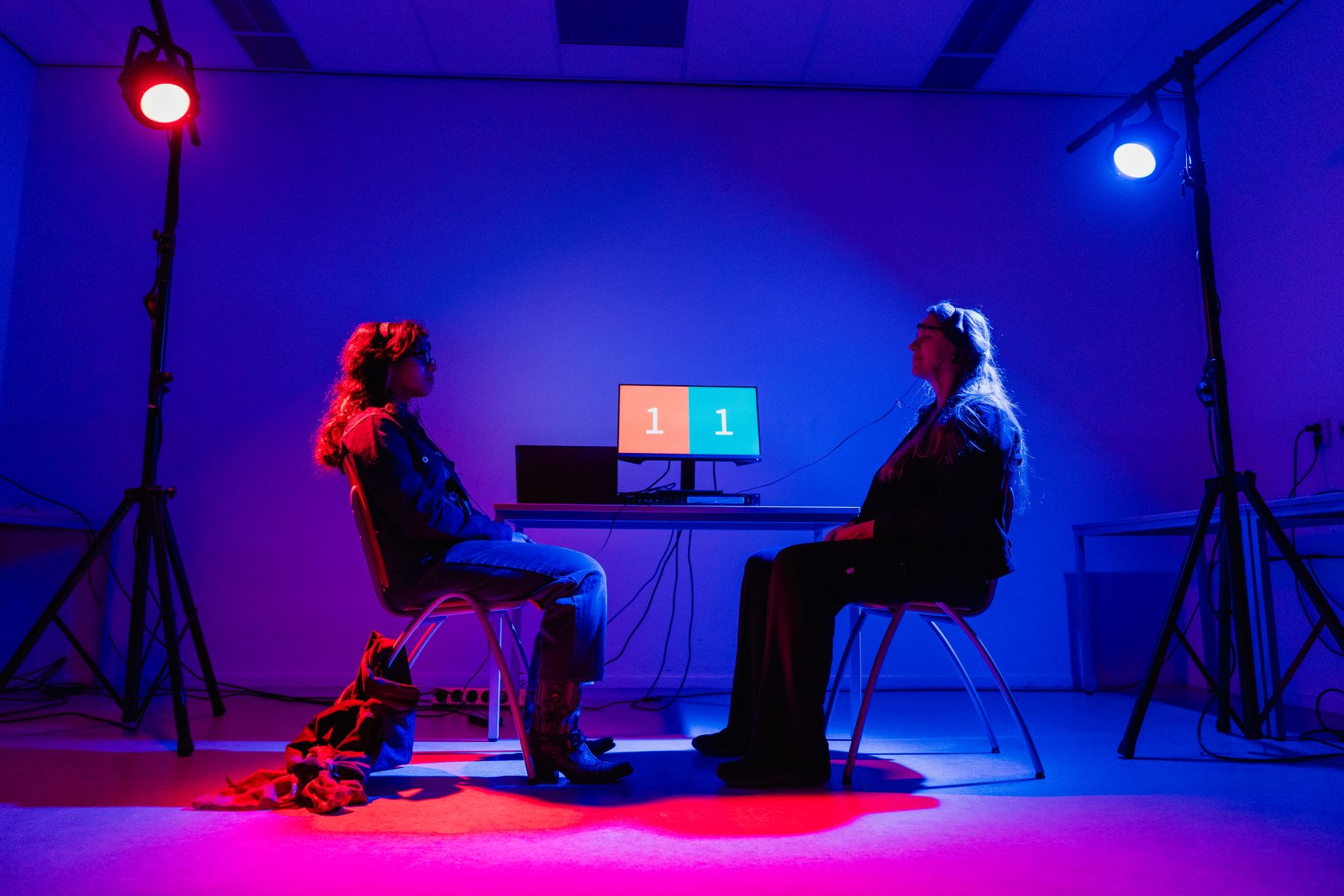
The person who is best at relaxing controls the sound in the room. Visitor Inaya wins the first round but goes on to lose the game: ‘It is interesting: can you relax on command if a whole group is sitting watching you? I wasn’t able to completely at any rate.’ (2/2) -
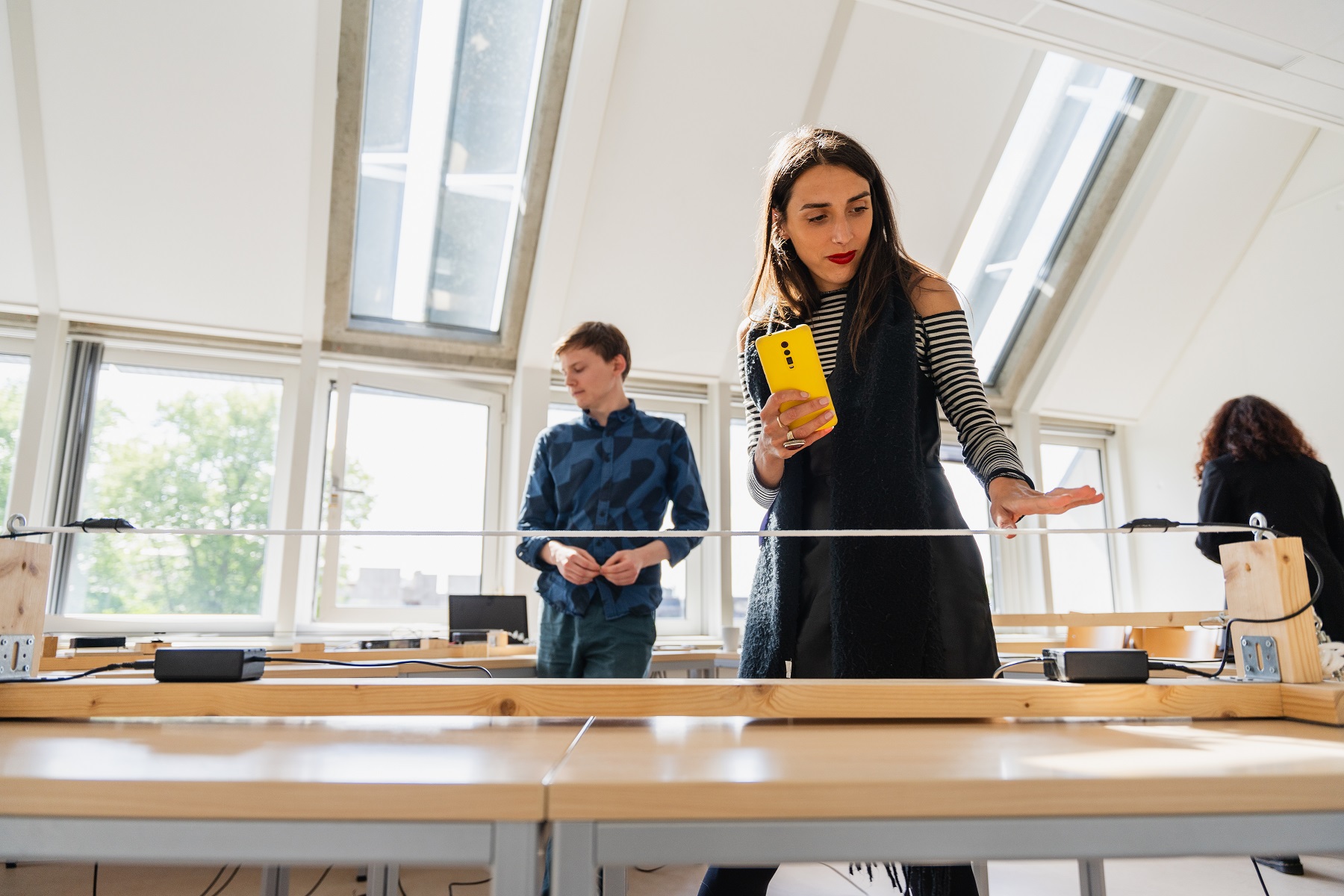
In the project ‘Bar, Rope, String’, Master’s in Media Technology graduate Olaf Wisselink investigated the relationship between physical interfaces and the digital sound synthesis of musical instruments. In the room are three large sound-producing instruments developed by Wisselink. A visitor touches the string and a low tone reverberates through the room. (1/2) -
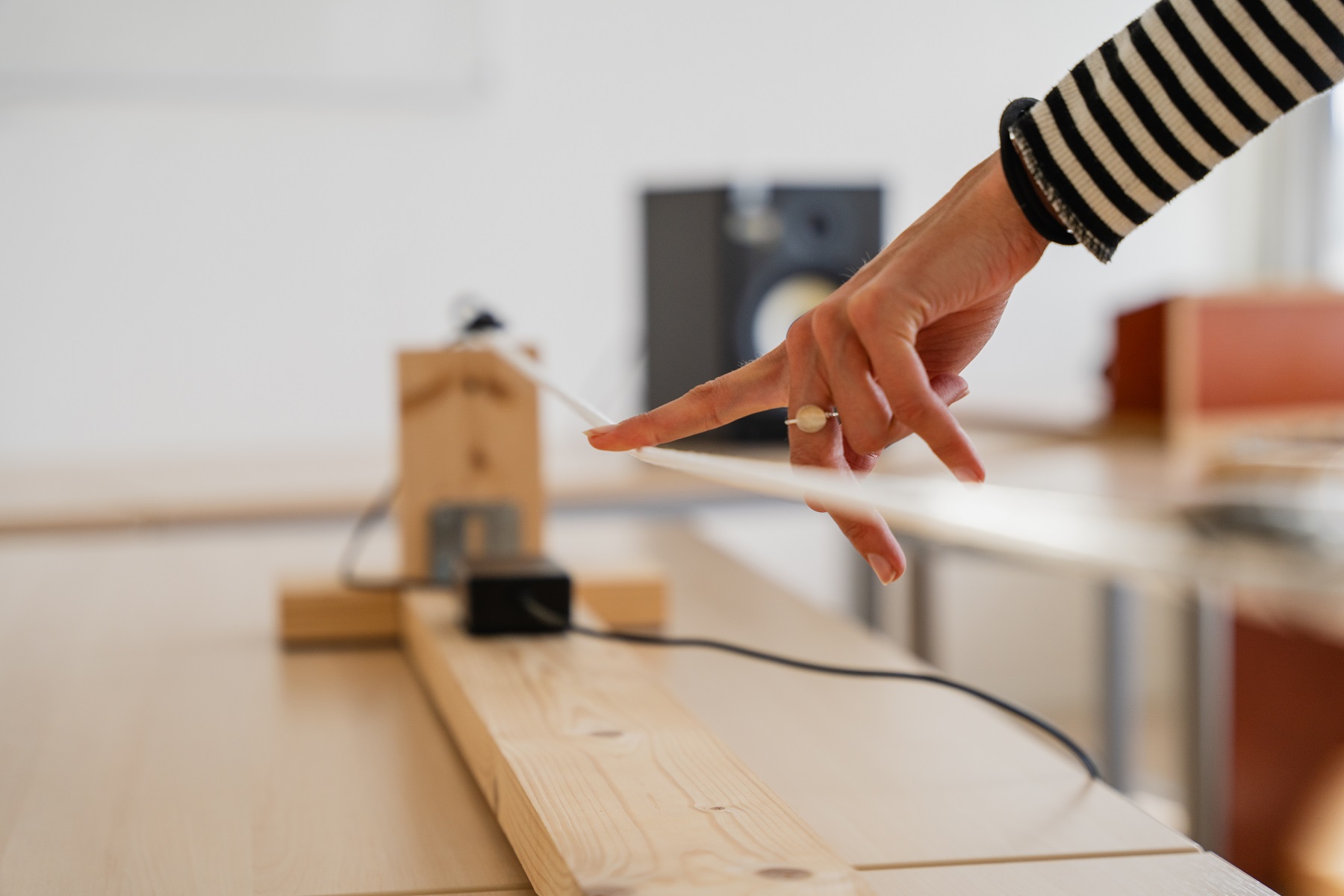
Wisselink says that with acoustic musical instruments, there is a link between the person playing the instrument and the sound produced but with digital musical instruments, this is separate. Wisselink was curious about what happens when we blur the separation and therefore developed three new musical interfaces. (2/2) -
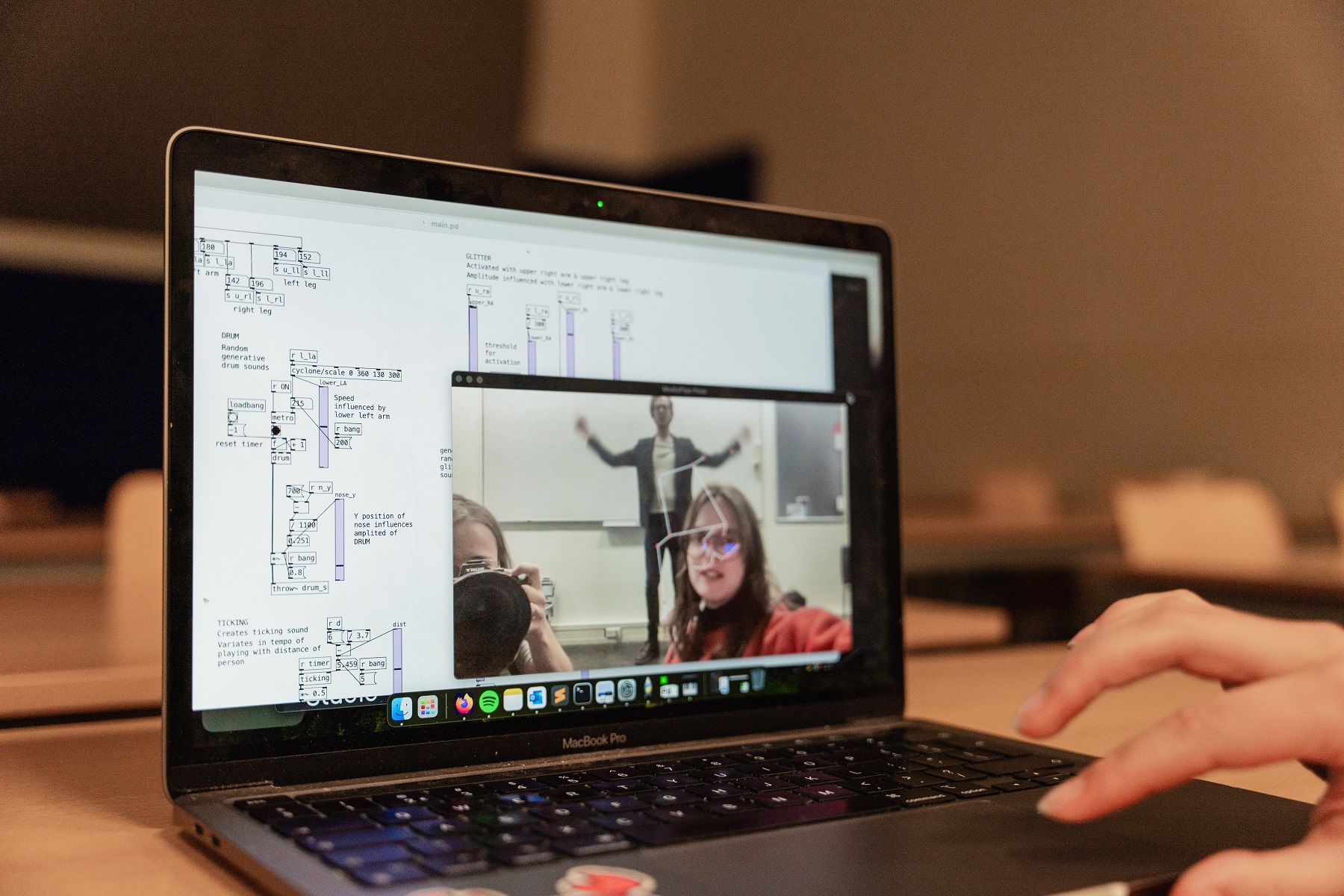
‘Learning by doing’ is key, says Joyce den Hertog. She and Zoë Breed produced the ‘Pure Dance’ artwork. Here the physical movements we make in front of a webcam control the music we hear. ‘We calculated the angles of the body parts and determined different points, each creating its own sound and pitch. The camera registers my nose, and if I bend my knees, for example, the tempo of the music changes.’ The visitors shape their bodies into different positions and new sounds fill the room. -

Visual anthropologist Mark Westmoreland introduces ‘Broken Ground: Expanding Landscapes’, a photo essay with aerial photos of northern Ghana. This collaboration with the local community aims to collect embodied knowledge or knowledge that is deeply anchored in our bodies and actions. (1/2) -

New research methods such as drawing, photographing, filming and recording sound are used instead of traditional written methods. ‘I am not an artist but nor am I a scientist’, says Westmoreland. ‘I’m something in between.’ (2/2). -
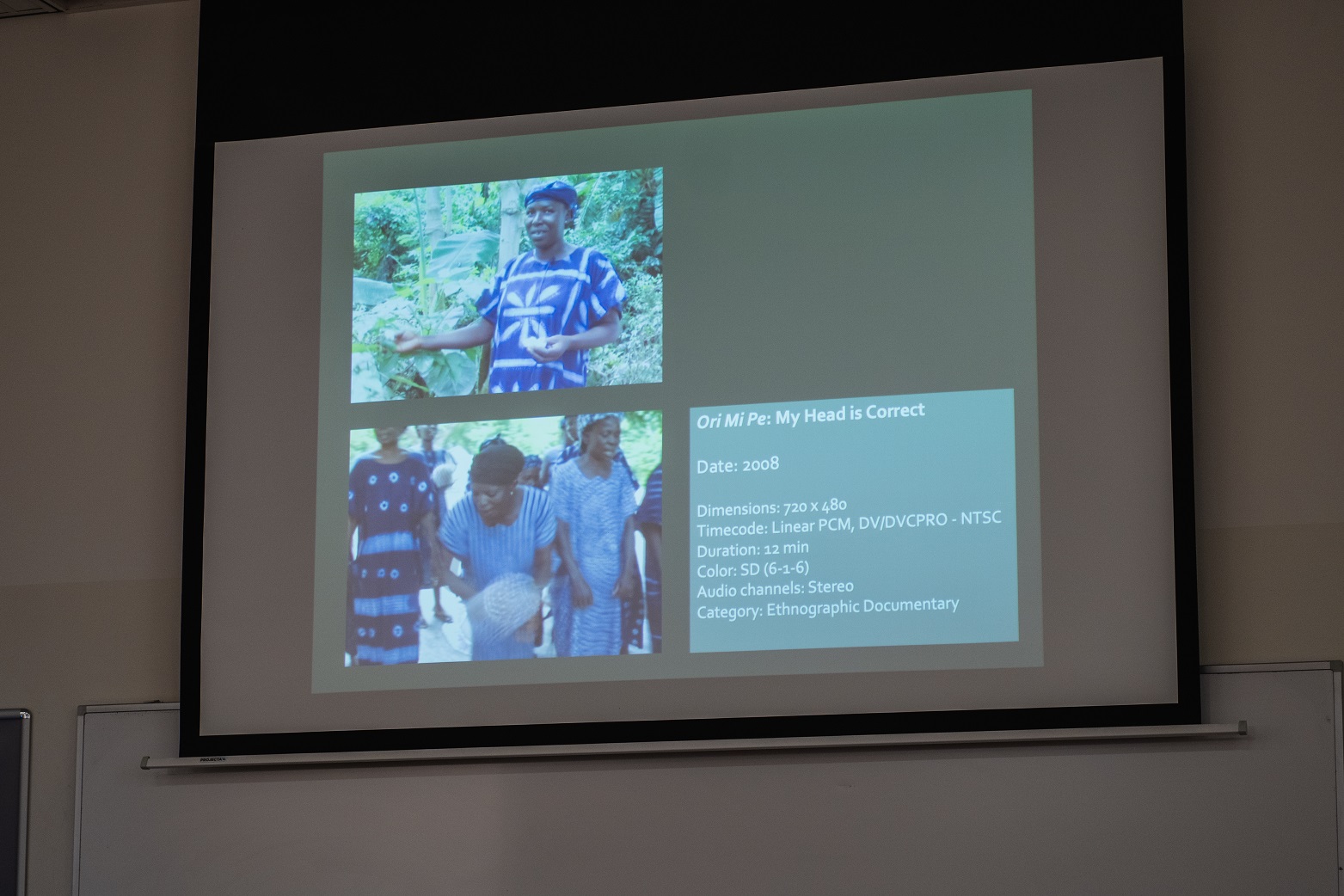
Visual anthropologist Cristiana Strava worked at the Harvard Sensory Ethnography Lab from 2007 to 2009 on the film ‘Ori Mi Pe’ about women weaving in Nigeria. In this 12-minute film, she criticises older forms of ethnographical filmmaking that are often about the ‘exotic other’ and aim to learn about other cultures. In her film, Strava takes a completely different approach and works together with the women. Methods such as photo-voice and allowing the women to hold the camera offer new forms of representation. -

Students Rianne Jorritsma, Lisanne Schoonebeek and Wout den Buurman, from the Master’s specialisation Science Communication and Society, want to bring the Extracellular Matrix (ECM) to our attention with their audiovisual project. ECM is an important part of our bodies that holds cells together and plays an important role in the communication between cells. Their project ‘Collagen Canvas’ is a digital black canvas that gradually fills with colourful lines that interact with the music to simulate the ECM interactions in our bodies. -

Before visitors enter room 2.17, they can hear the strains of Vincent Martig's clarinet. He plays abstract, computer-generated sheet music. For his Master’s in Media Technology, Pieter Pierrot researched whether musicians could play AI-generated musical scores. This led to the project: ‘Shapes and Staffs: An exploration of computer-generated graphic scores”. (1/2) -

This project investigates the meaning and essence of music in an era in which AI can do more and more creative tasks. ‘Most surprising of all is that the meaning of the music comes from neither the musician nor the composer but the listener. If the listener thinks something of it, then it holds meaning.’
Text and photos: Wilke Geurds
About the exhibition
This exhibition was the last activity in the YAL ‘seasons of interdisciplinarity’ series, in which researchers from different disciplines worked together on complex issues. The exhibition was in collaboration with LIACS Media Technology and ReCNTR and involved seven projects that explored the boundaries between art and science. The exhibition was a one-off but organisers Jan van Rijn and Bram Boesschen Hospers were pleased with the result. As far as they are concerned, a sequel next year will continue bridging the gap between art and science.
